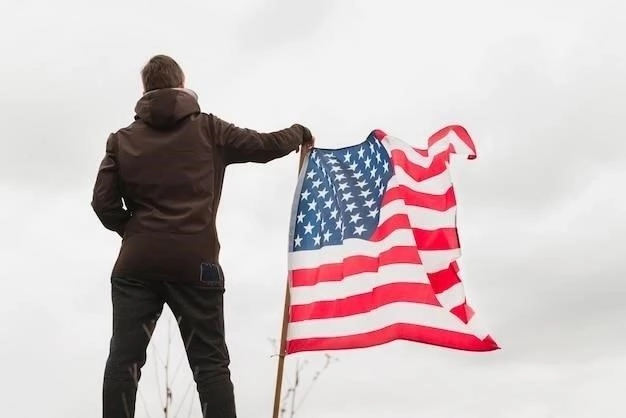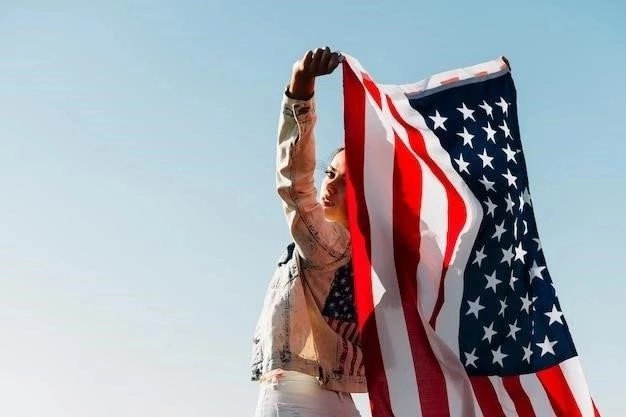The Pledge of Allegiance: A Historical Perspective
The Pledge of Allegiance, a concise yet potent affirmation of loyalty to the United States, boasts a history as multifaceted as the nation itself. From its 19th-century origins as a tool for promoting patriotism amongst youth and immigrants to its evolution through various iterations reflecting changing social and political landscapes, the Pledge stands as a testament to the enduring values and ideals of the American experiment. This exploration delves into the historical tapestry of the Pledge, examining its origins, transformations, and the debates it has sparked along the way.

Origins and Evolution of the Pledge
The Pledge of Allegiance, a cornerstone of American civic tradition, did not emerge fully formed but rather underwent a fascinating evolution, reflecting the changing sociopolitical landscape of the United States. Its genesis can be traced back to 1892, when Baptist minister Francis Bellamy, employed by the popular youth magazine The Youth’s Companion, penned the original iteration: “I pledge allegiance to my Flag and the Republic for which it stands, one nation, indivisible, with liberty and justice for all.” Commissioned as part of a nationwide school program commemorating the 400th anniversary of Columbus’s arrival in the Americas, Bellamy’s Pledge, imbued with themes of unity and national pride, quickly gained traction.
However, the Pledge we recite today is not a verbatim replica of Bellamy’s original. Over the ensuing decades, it underwent several notable modifications. In 1923, in a bid to underscore the distinction between immigrants’ native lands and their adopted nation, the phrase “the Flag of the United States of America” replaced “my Flag.” A year later, “of America” was appended to “United States.” The most significant alteration occurred in 1954, amidst the fervor of the Cold War and rising anti-communist sentiment. Spearheaded by President Dwight Eisenhower, the phrase “under God” was inserted, transforming the Pledge into an affirmation not only of national allegiance but also of religious conviction. This addition, while embraced by many, also sparked enduring controversy, igniting debates about the separation of church and state and the place of religious expression in public life.
The Pledge in Times of War and Peace
Throughout its history, the Pledge of Allegiance has served as a poignant articulation of national unity and resolve, particularly during times of conflict and uncertainty. In the throes of war, the Pledge has transcended its role as a mere patriotic ritual, transforming into a powerful instrument for galvanizing public support, bolstering morale, and reinforcing a shared sense of purpose in the face of external threats. During World War II, for instance, the Pledge took on profound significance as Americans rallied around the flag, finding solace and strength in its message of unwavering loyalty to the nation and its ideals. The image of schoolchildren across the country solemnly reciting the Pledge, their right hands placed over their hearts, became emblematic of national solidarity and determination.
Yet, even in times of peace, the Pledge has retained its capacity to stir emotions and ignite debate, serving as a lightning rod for discussions about patriotism, civic duty, and the very meaning of American identity. Its presence in schools and public events has sparked ongoing conversations about the balance between individual liberty and collective responsibility, the role of government in fostering national unity, and the limits of acceptable dissent in a democratic society. From the loyalty oaths demanded during the Red Scare to contemporary debates over athletes kneeling during the Pledge in protest against racial injustice, the Pledge’s ability to evoke strong emotions underscores its enduring power as a symbol of both national unity and the complexities inherent in navigating the ideals upon which the United States was founded.

The “Under God” Debate
The 1954 insertion of the phrase “under God” into the Pledge of Allegiance remains perhaps its most contentious modification, igniting enduring debates about the entanglement of religion and government in American public life. Proponents of the inclusion, including numerous religious groups and President Eisenhower himself, argued that it affirmed the nation’s historical and cultural underpinnings, acknowledging the role of divine guidance in its founding and development. They posited that recognizing God in the Pledge served as a powerful reminder of the moral and spiritual values upon which the United States was built, fostering a sense of shared identity and purpose.
Conversely, opponents, including civil liberties organizations and individuals from non-religious backgrounds, contended that the addition violated the Establishment Clause of the First Amendment, which prohibits the government from establishing or favoring any religion. They argued that inserting “under God” effectively excluded atheists, agnostics, and those from minority faiths, creating a climate of religious coercion and undermining the principle of inclusivity at the heart of the American experiment. The “under God” debate, far from settled, continues to reverberate through legal challenges, school board disputes, and public discourse, reflecting the broader societal struggle to reconcile deeply held religious convictions with the principle of separation of church and state.
Legal Challenges and Controversies
The Pledge of Allegiance, despite its seemingly straightforward message of national unity, has been a lightning rod for legal challenges and controversies throughout its history, reflecting the enduring tensions surrounding the First Amendment rights of free speech and religious liberty. Perhaps the most persistent legal battles have revolved around the constitutionality of the phrase “under God,” inserted in 1954. Opponents have consistently argued that its inclusion in a mandatory recitation violates the Establishment Clause, which prohibits the government from endorsing or promoting any particular religion. Numerous lawsuits have challenged the constitutionality of requiring students to recite the Pledge, often focusing on the “under God” phrase as a violation of the rights of atheist, agnostic, and secular individuals.
Beyond the “under God” debate, legal challenges have also arisen concerning the right of individuals to abstain from reciting the Pledge altogether. The Supreme Court, in its landmark 1943 ruling in West Virginia State Board of Education v. Barnette, established that students cannot be compelled to salute the flag or recite the Pledge if it violates their religious or personal beliefs. This ruling affirmed the principle that patriotic expression, however deeply valued, cannot be coerced by the government. The Pledge’s history, intertwined with litigation and ongoing debate, underscores its capacity to ignite profound questions about the balance between individual rights and collective identity, the boundaries of permissible dissent, and the very nature of American democracy.

The Pledge and the American Identity
The Pledge of Allegiance has become deeply entwined with conceptions of American identity, serving as both a reflection of and a catalyst for evolving understandings of what it means to be an American. From its inception, the Pledge has been imbued with ideals central to the national narrative: unity, liberty, justice, and allegiance to the republic and its symbols. It has served as a unifying ritual, particularly for new immigrants, offering a shared language and set of values through which to articulate their belonging in a diverse and evolving nation. The Pledge’s emphasis on “one nation, indivisible” has resonated through times of internal strife and external conflict, reinforcing a sense of collective purpose and shared destiny.
However, the Pledge’s relationship to American identity is far from monolithic or uncontested. As the nation grapples with its complex history and ongoing struggles for equality, the Pledge has also become a focal point for dissent and critical examination. The debates surrounding its recitation, particularly the inclusion of “under God” and the right to abstain, highlight the inherent tensions between individual conscience and collective conformity, religious freedom and secular governance. The Pledge, in its various iterations and interpretations, stands as a testament to the dynamism and complexity of American identity, reflecting both the enduring power of its founding ideals and the ongoing project of striving towards a more perfect union.

Symbolism and Significance of the Pledge
The Pledge of Allegiance, though a relatively recent addition to American civic life, has ascended to a position of profound symbolic significance, representing a complex tapestry of ideals, aspirations, and historical narratives. Its concise encompass a solemn affirmation of loyalty to the United States, its flag, and the republic it embodies, embodying concepts of unity, liberty, justice, and fidelity to democratic principles. The act of reciting the Pledge, often accompanied by a gesture of placing the right hand over the heart, transcends mere verbalization, evolving into a ritualistic performance of national identity and belonging.
However, the Pledge’s symbolism extends beyond a simplistic interpretation of patriotism. Its very existence, along with the controversies it has engendered, speaks to the ongoing negotiation of individual rights and collective responsibility within a pluralistic society. The debates surrounding the inclusion of “under God,” the right to abstain from recitation, and its place in public institutions reflect deeper societal anxieties concerning religious freedom, freedom of expression, and the boundaries of acceptable dissent. Thus, the Pledge of Allegiance, in its various interpretations and contestations, stands as a potent symbol of both the enduring power of American ideals and the complexities inherent in their pursuit.
The Pledge in Education and Public Life
The Pledge of Allegiance occupies a distinctive and often contested space within American education and public life, serving as a focal point for debates about patriotism, civic duty, and the role of government in shaping national identity. Since its widespread adoption in the early 20th century, the Pledge has become a familiar ritual in schools across the nation, often recited daily by students in classrooms and assemblies. Proponents argue that this practice instills in young citizens a sense of belonging, shared values, and respect for national symbols and institutions. The Pledge’s presence in schools, they contend, fosters a sense of unity and collective purpose, transmitting essential civic virtues to future generations.
However, the Pledge’s place in education and public life has not been without controversy. Critics argue that its mandatory or coerced recitation, particularly in light of the “under God” phrase and the right to abstain, raises concerns about freedom of conscience, religious liberty, and the potential for government overreach into matters of personal belief. The debate extends beyond schools, encompassing its use in government meetings, public events, and naturalization ceremonies. These ongoing discussions highlight the complex relationship between individual rights and collective identity, the role of symbols and rituals in a diverse society, and the ongoing pursuit of a more inclusive and just nation.

The Future of the Pledge of Allegiance
As the United States navigates the complexities of a rapidly changing social, cultural, and political landscape, the future of the Pledge of Allegiance remains an open question, subject to ongoing debate and evolving interpretations. Its enduring presence in public schools and civic life suggests a persistent desire for rituals and symbols that can articulate a shared national identity and reinforce a sense of belonging. However, the Pledge’s historical evolution, marked by both periods of widespread acceptance and fervent contestation, suggests that its future form and significance will likely be shaped by ongoing dialogues about the meaning of American citizenship, the boundaries between individual rights and collective responsibility, and the role of government in fostering national unity.
The enduring controversies surrounding the Pledge, particularly the inclusion of “under God” and the right to abstain from recitation, underscore the challenges of reconciling diverse beliefs and values within a pluralistic society. As new generations grapple with questions of identity, belonging, and the meaning of patriotism, the Pledge of Allegiance will likely continue to serve as both a mirror reflecting societal anxieties and a lightning rod for debates about the soul of the nation. Whether it ultimately evolves to embrace greater inclusivity or becomes increasingly fraught with division remains to be seen, but its capacity to ignite passion and controversy ensures its continued relevance in the American story.
Alternative Perspectives on the Pledge
While the Pledge of Allegiance is often presented as a unifying symbol of American identity, it is crucial to acknowledge the existence of alternative perspectives that challenge its presumed universality and question its role in a truly inclusive and equitable society. Critics, including civil liberties advocates, religious minorities, and those who have experienced historical injustices, argue that the Pledge, particularly with its “under God” phrase, can represent a form of coerced conformity that marginalizes dissenting voices and obscures the nation’s complex history. For some, the Pledge’s emphasis on unwavering allegiance rings hollow in the face of systemic inequalities and ongoing struggles for social justice.
Furthermore, scholars and activists have highlighted the Pledge’s historical links to nationalism, assimilationist policies, and the suppression of dissent. They point to its origins in the late 19th century, a period marked by anxieties about immigration, social unrest, and the expansion of American power. From this perspective, the Pledge’s promotion of a singular, homogenous national identity can be seen as a tool for silencing dissent and marginalizing those who do not conform to dominant cultural norms. Engaging with these alternative perspectives is essential for fostering a more nuanced and inclusive understanding of American identity, one that acknowledges both the aspirations of unity and the persistence of historical injustices.

The Pledge in a Global Context
Viewed through a global lens, the Pledge of Allegiance offers a fascinating case study in the construction and performance of national identity. The United States, with its history as a nation founded by immigrants and its enduring emphasis on individual liberty, stands somewhat apart from other nations where expressions of patriotism and allegiance are often deeply entwined with long-standing cultural traditions, ethnic identities, or historical narratives of monarchy and empire. The Pledge’s relatively recent origins and its evolution through various iterations reflect the dynamic and often contested nature of American identity itself.
Furthermore, the Pledge’s emphasis on allegiance to a flag and a republic, rather than to a specific leader or ruling dynasty, aligns with the United States’ image as a beacon of democracy and a champion of individual rights. However, this idealistic self-perception is often challenged by the realities of the nation’s global actions, particularly its history of military interventions, economic dominance, and support for authoritarian regimes. The Pledge, when juxtaposed with these complexities, raises questions about the tensions inherent in reconciling national ideals with the exercise of power on a global stage. Examining the Pledge within a global context allows for a more nuanced understanding of its symbolism, its relationship to American exceptionalism, and its implications for the nation’s image and role in the world.

The Enduring Legacy of the Pledge
The Pledge of Allegiance, despite its relatively brief history, has indelibly etched itself onto the fabric of American civic life, leaving an enduring legacy that transcends generations and continues to shape national discourse. Its concise yet powerful articulation of loyalty to the United States, its flag, and the republic they represent has resonated with millions, serving as a shared touchstone for expressing patriotism, unity, and a commitment to the ideals upon which the nation was founded. The image of schoolchildren, hands over their hearts, solemnly reciting the Pledge has become an iconic representation of American identity, both within the nation’s borders and on the global stage.
Yet, the Pledge’s legacy is not one of uncritical acceptance or unwavering consensus. Its evolution, marked by revisions, legal challenges, and fervent debates over its place in public life, reflects the dynamism of American society itself, its ongoing struggle to reconcile lofty ideals with complex realities. The enduring controversies surrounding the “under God” phrase and the right to abstain from recitation underscore the persistence of questions about religious freedom, individual conscience, and the boundaries of permissible dissent in a democratic society. The Pledge of Allegiance, in its enduring presence and its capacity to ignite both reverence and resistance, stands as a testament to the enduring power of symbols and the ongoing pursuit of a more perfect union.










